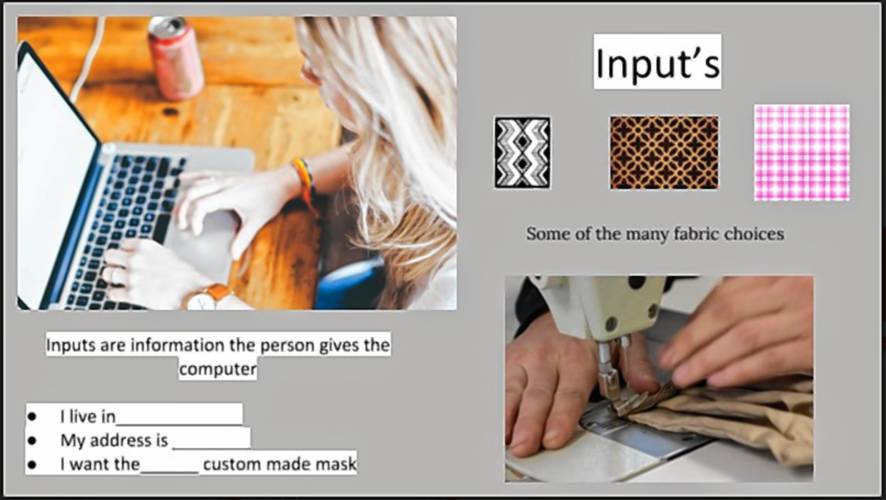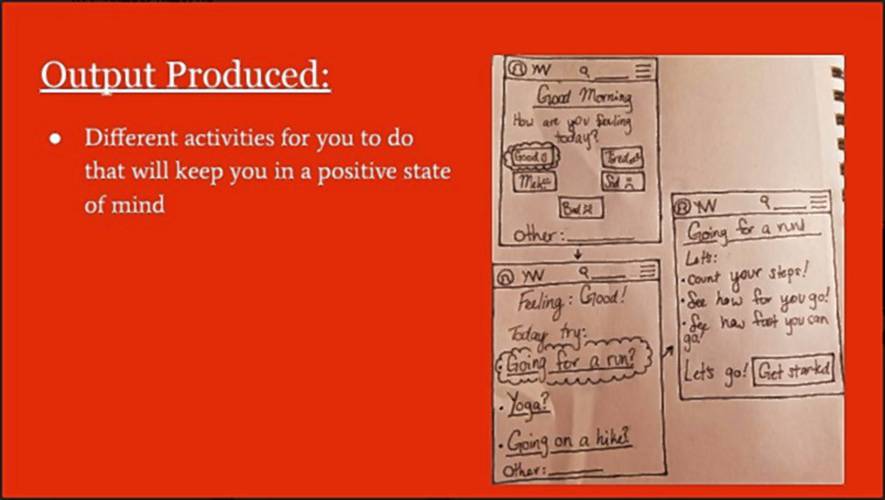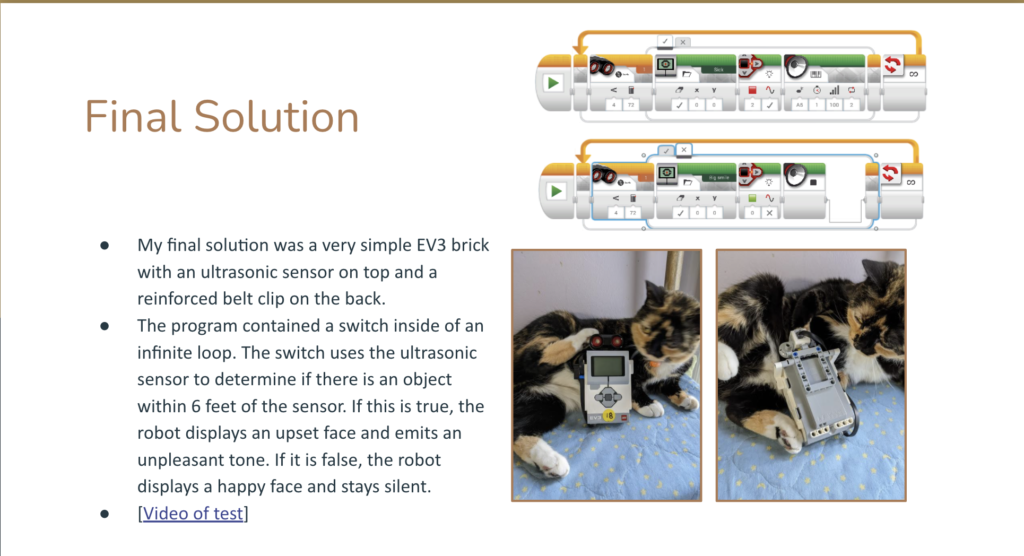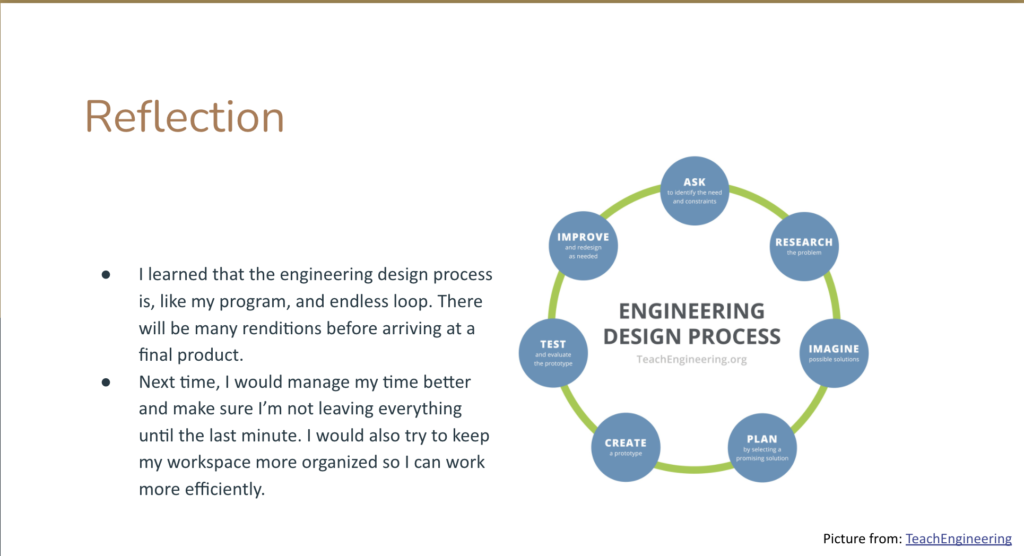The Challenge
I was faced, at the start of the year, with creating curriculum for a new middle school Computer Science courses centered on Computer Science Discoveries (CSD) from http://code.org/. I also had to create new robotics engineering projects for high school engineering students, many of whom I had last year and who had already completed my tried and true robotics projects.
I wanted students to be empowered to create solutions to pressing real-world problems. That is our end goal ultimately, so why not start now? So, I created two new projects that focused on COVID.
Another challenge was that projects needed to be able to be done all remotely or with a mix or remote and in-class students. Note that I was lucky to be able send LEGO Education EV3 robot kits home if I needed to. The CSD curriculum is web-based and available from home or school.
Design Your Own COVID App Project
Middle school students first learned the basics of computers and computer programing. They studied the key concepts of problem scoping, input, output, processing, and storage from CSD. The standard CSD curriculum has a design your own app project at the end of the first unit that I modified to focus on solving a COVID related problem. I was impressed by how each student designed an app that strongly reflected their own concerns and interests.
Apps designs were documented in a series of Google slides, which included drawings of the main screens. The slides were presented by each student to students remotely and in class concurrently in a Google meet. Students were eager to present their creative work even though most were not so eager to speak on in Google Meets.
Here are some example slides.


Here’s a complete presentation from Rachel. Her app educates people about COVID and how to stay safe.
She remarked that the project forced her to consider the perspectives of a wide variety of people, including people who were not aware of or in denial of the risks of COVID.
It’s really fun. You get to be creative and think of things differently. Like look at different perspectives, like looking into the perspective of people not completely understanding how they should be handling Corona Virus. Rachel, Grade 8
Social Distance Robot Project
High school students were challenged to design and prototype a wearable or stand-alone robot that helped with social distancing. They went through a research, planning, building, test, redesign, and share out engineering process using the LEGO Education EV3 robot kit. They presented Google slides to the other students, whether in-class or remote. The two slides below are from a student whose family choose remote schooling all year, for example.


Jessie, Grade 11 Student
Jesse, like many students during remote learning, commented on the challenges of organizing their time and materials at home. This is an important skill that the pandemic and remote school forced to the forefront. I wondered if the problem was that students depended too much on the frequent teacher student feedback loop that goes on during in-class learning.
Here’s a complete presentation from senior Max, who challenged himself to use three motors.
That rotating turret component I don’t think it’s even necessary but I decided to challenge myself and it worked out great. Max, Grade 12 Student
What Students Liked
Eleven middle and high school students (n=11) gave permission to be interviewed. I asked them a few questions to try better understand their experience doing the COVID projects. Many common themes emerged, some expected and some not so expected.
As I thought, hands-on (n=5 instances) projects were perceived as fun by students (n=13). Students also liked that the projects were challenging (n=5) and open-ended, the latter often expressed as not having any limits (n=5). These latter two I did not expect. I thought it was all about the my projects being fun and creative and not so much as being hard and challenging.
I think it was really fun. It wasn’t the easiest thing to do but it was fun to think and be open to a bunch of things and possibilities because there weren’t any limitations.
I liked it. It was pretty interesting. You had to think.
Creativity was often mentioned (n=6) as a reason for the projects being fun.
Unlike most of the school projects I found it pretty interesting and fun. For once, we actually got to use our creativity – without too many constraints – to be able to do a school project. Yeah, I enjoyed it.
I was not expecting this but the student responses revealed how they were feeling about COVID. The experience may have helped students process their feelings about being in a pandemic. Some viewed the project as being relevant (n=2) and solving a real need (n=9).
I think was pretty fun specially because it’s a very unique project especially since we are in such a unique time right now and I like how the project was catered to what’s happening in the real world right now.
It just really made me think of a social distancing and how important it is to social distance. Other than that, this robot isn’t a solution or isn’t a cure for the actual virus but it can just ease the situation at hand.
At least one student also made the explicit connection with the importance of engineering in solving COVID and other pressing issues. This made me feel good about being a former engineer trying to get students excited about engineering.
Yeah, I think it did I think it has taught me that engineering is pertinent in every aspect of life – especially COVID – because you need engineers to… Say you’re doing research: you’re trying to find a vaccine, you’re trying to figure out what will prevent it from spreading, and you need to use engineering to find solutions to those problems.
Some students combined the many themes together.
It was very interesting because I didn’t have like a certain design that I had to create and it’s like I could virtually make anything. That’s where my creative side comes in and I can take whatever is inside the kit that was given to us and create a robot and is very cool because I am a hands-on person. So, I like working on what is directly what’s in front of me instead of like working on a computer.
Take Away
In summary, the COVID projects met my curriculum goals in a fun, challenging, and relevant way for students. While I expected that students would perceive the work as fun and creative, I was pleasantly surprised that students found the open-ended aspect of the projects challenging in a good way. The projects as revealed students’ feelings about COVID and seemed to help them process those feelings.

Pingback: Pioneer Valley Regional School Innovation Center Update | Kids Engineer!